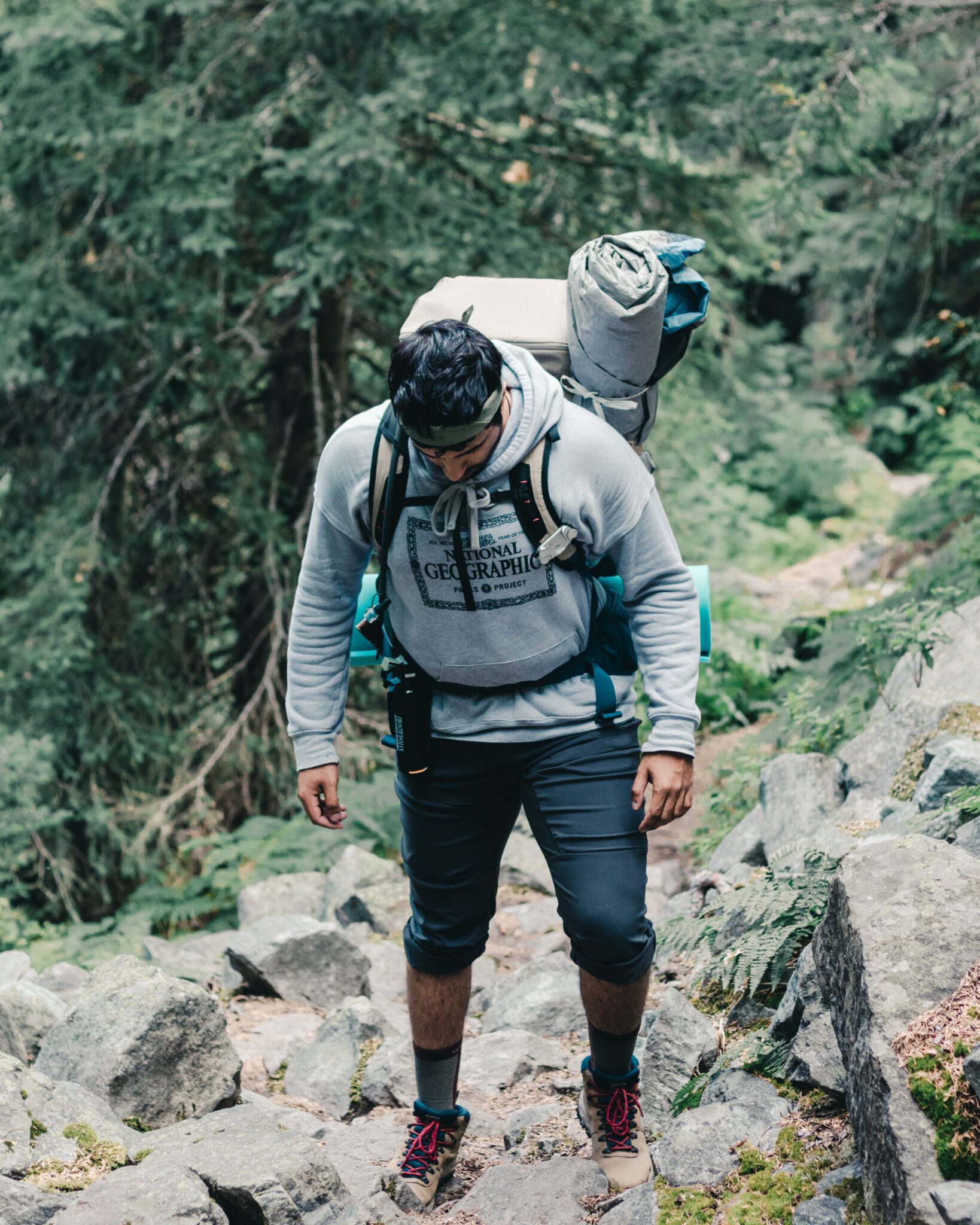Having the right survival clothes when suddenly confronted with a SHTF scenario can make all the difference between survive and perish.
Suitable survival clothes, will make sure of your comfort, safety and ability to adapt to the situation.
Survival clothes provide protection and functionality in challenging environments. A little bit more than your everyday clothes, they add features like insulation, weather-proofing, durability, and even camouflage when needed.
Survival Clothes – the Basics
Defining Survival Clothes
Survival clothes are built to withstand the challenges of nature, providing protection against elements such as extreme temperature, rain, wind, and protection against body hurts like abrasions, burns and scolds.
Survival Clothes – Key Features
Durability: Survival clothes should be rugged and able to withstand wear and tear. There needs to be reinforced stitching, bar-tacking, double-layered fabric in high-wear areas, and quality zippers and fasteners.
Sweat Control: Breathable fabrics are essential for keeping you dry and comfortable. Wet clothing can lead to hypothermia in cold conditions and discomfort in hot weather.
Insulation: Survival clothes often feature synthetic or down insulation to trap warmth.
UV Protection: In hot climates with a lot of sunlight survival clothes need to have built-in UV protection to shield your skin from harmful rays.
Pockets: Survival clothes often have multiple pockets for storing the really essential items like your EDC, maps and first-aid kit.
Survival Clothes – Choosing the Right Fabrics
Synthetic Fabrics: Materials like polyester and nylon are lightweight and quick-drying. They are often used in base layers and outer shells.
Merino Wool: Natural fibre. Good for insulation and moisture-wicking properties. Merino wool is a popular choice for base layers and socks. It also resists odours.
Down Insulation: Down feathers are light weight and god for keeping you warm. Perfect for cold conditions but will lose insulation when wet.
Gore-Tex and Similar: Breathable, waterproof membranes used in outer shells to protect against rain and wind.
Ripstop Nylon: Reinforced nylon fabric resists tearing and is commonly found in pants, jackets, and backpacks.
Use Survival Clothes in Layers
Layering involves wearing multiple clothing layers to manage temperature, moisture, and comfort effectively. By adding or removing layers as needed, you can adapt to changing weather conditions and activity levels without overheating or getting too cold.
Base Layer
The base layer is the first layer of clothing that comes into direct contact with your skin. Its primary purpose is to manage moisture by wicking sweat away from your body, keeping you dry and comfortable. Base layers can be made from materials like merino wool or synthetic fabrics. They should fit snugly but not tight, as a tight fit can restrict airflow and hinder moisture-wicking.
Middle Layer
The insulating layer provides warmth by trapping air close to your body. It consists of garments like fleece jackets, down vests, or synthetic insulated jackets. The thickness and warmth of the insulating layer depending on the weather conditions.
Outer Layer
The outer shell serves as a protective barrier against wind, rain, and snow. It needs to be windproof and waterproof or water-resistant, depending on the expected conditions. Many outer shells incorporate breathable membranes like Gore-Tex to allow moisture to escape while preventing water from entering.
Survival Clothes – Extra Layers
In addition to the three main layers, accessories can enhance your survival clothing system:
Headwear: Heat escapes from the head, so wearing a hat or beanie can help regulate your body temperature.
Gloves and Mittens: Keeping your hands warm and dry is important, especially in cold conditions.
Scarves: Can provide extra insulation for your neck and face in cold weather or protection from the sun.
Leggings: Designed to cover the lower legs and footwear, leggings prevent snow, water, or debris from entering your boots or pants.
Survival Clothes for Extreme Environments
Cold Weather Survival Clothes
To survive in extreme cold weather you will need survival clothes made to stand up to freezing temperatures, icy winds, and snow.
Insulated Jacket: A high-quality insulated jacket, either down or synthetic, for retaining body heat.
Cold-Weather Pants: Insulated pants with waterproof and windproof properties.
Thermal Base Layers: Merino wool or synthetic base layers to keep moisture away from your skin.
Insulated Boots: Insulated and waterproof boots to keep your feet warm and dry.
Hats and Gloves: Warm, insulated hat and waterproof gloves to protect extremities.
Balaclava or Face Mask: To shield your face from biting cold and wind.
Hot Weather Survival Clothes
To survive in hot and dry climates requires clothing that keeps you cool and protects you from the sun’s intense rays.
Lightweight Moisture-Wicking Shirt: A breathable, moisture-wicking shirt helps keep you dry and comfortable.
Sun-Protective Clothing: Clothing with built-in UV protection to shield your skin from the sun.
Wide-Brimmed Hat: A hat with a wide brim provides shade for your face and neck.
Lightweight Pants: Lightweight, breathable pants that offer sun protection and airflow.
Wet and Rainy Survival Clothes
To survive in wet and rainy climates the focus is on staying dry and comfortable.
Waterproof Jacket: Waterproof jacket with taped seams to keep the rain out.
Waterproof Pants: Waterproof pants or rain pants for complete lower-body protection.
Rain Boots: Waterproof boots with good traction to keep the water out.
Poncho or Rain Cover: A poncho or rain cover for your backpack keeps your gear dry.
Quick-Drying Base Layers: Make sure your base layers can wick moisture away from your skin even in wet conditions.
Tactical Survival Clothes
Tactical survival clothes are designed for military or law enforcement applications. However they are also suitable for surviving with a little style due to their durability and design.
Reinforced Construction: Tactical clothing is built to withstand tough conditions and resist wear and tear.
Pockets: Tactical clothing often features multiple pockets and attachment points for gear, allowing you to carry essentials with ease.
Camouflage and Concealment
Camouflage is a major consideration for your tactical survival clothes, Camouflages clothing helps you blend into your surroundings and remain unseen. Camouflage patterns vary depending on the environment, with options for woodland, desert, snow and even city-scapes.
Versatility and Utility
Tactical clothing is designed to adapt to a range of scenarios. Long legged pants that can transform into shorts, shirts with roll-up sleeves, and removable hoods are just a few examples of the versatility you can find in these garments.
Survival Clothes for Specific Activities
Hiking and Backpacking Survival Clothes
Moisture-Wicking Shirt: A lightweight, moisture-wicking shirt keeps you comfortable during extended hikes.
Convertible Pants: Convertible pants that zip off into shorts provide versatility for varying weather conditions.
Hiking Boots: Sturdy, comfortable hiking boots with good ankle support are essential.
Sun Hat: Protect your face and neck from the sun with a wide-brimmed hat.
Camping Survival Clothes
Warm Layers: Temperatures can drop at night. Bring warm layers for comfort.
Waterproof Outerwear: Be prepared for unexpected rain with a waterproof jacket and pants.
Durable Pants: Rugged, quick-drying pants are ideal for camp activities.
Camp Shoes: Lightweight camp shoes or sandals provide comfort around the campsite.
Hunting and Fishing Survival Clothes
Camouflage Gear: Camouflage clothing that matches your surroundings.
Insulated Outerwear: Stay warm during long periods of inactivity with insulated outerwear.
Waterproof Boots: Waterproof boots are essential for wet hunting or fishing environments.
Gloves and Face Mask: Camouflaged gloves and a face mask help conceal your hands and face.
Emergency Preparedness Survival Clothes
All-Weather Gear: Prepare for the worst weather conditions with versatile clothing options.
Extra Clothing Layers: Extra clothing to stay warm during extended power outages, evacuations, or when your other clothes are drying.
Sturdy Footwear: Durable, comfortable footwear. Wear them in during practice sessions so no blisters when you really do not need them.
Reflective Clothing: Reflective clothing for when you want to be seen.
Camouflage Clothing: camouflage clothing for when you don’t want to be seen
Survival Clothes – Footwear First
Suitable Footwear is a critical component of your survival clothing wardrobe.
Durability: Boots with robust construction and materials that can withstand rough terrain.
Ankle Support: Your boots will need good ankle support to prevent injuries.
Waterproofing: Make sure your boots are waterproof or water-resistant.
Traction: Your boots need soles that provides excellent traction to prevent slips and falls.
Insulation: For cold conditions, insulated boots are essential to keep your feet warm.
Fit: And most important. Make sure your boots fit your feet, with socks, for comfort and to prevent blisters. Be sure to try on boots and wear appropriate socks when fitting.
Feet in Socks in Boots
As well as choosing the right boots, choosing the right socks is just as important. Moisture-wicking socks made of merino wool or synthetic materials help prevent blisters and keep your feet dry. And carry extra pairs for emergncies.
Taking Care of Your Survival Clothes
Survival Clothes are not cheap. Taking care and repairing them can save you a ton of money.
By taking care of your survival clothes and addressing small issues as they arise, you can ensure they remain reliable and functional for years to come.
Cleaning and Care Tips
Follow Care Instructions: Read and follow the care instructions on the clothing labels.
Use Mild Detergent: Use a mild, non-detergent soap or a specialised detergent designed for outdoor gear.
Avoid Fabric Softeners: Fabric softeners can affect the performance of moisture-wicking fabrics, so avoid using them.
Check for Damage: Regularly inspect your survival clothes for signs of wear, tear, or damage. Repair or replace items as needed.
Store Properly: Store your survival clothes in a cool, dry place away from direct sunlight and moisture. Use breathable storage bags or hangers to prevent mildew and odours.
Repairing Survival Clothes
Patching Holes: Use patch kits or repair tapes designed for outdoor gear to mend small holes or tears in fabric.
Restitching Seams: If seams start to come undone, re-stitch immediately them with strong, durable thread.
Replacing Zippers: A malfunctioning zipper can render a garment useless. Replace zippers promptly.
Reinforcing High-Wear Areas: Use seam sealer or specialised fabric patches to reinforce high-wear areas like elbows and knees.
Survival clothes do not have to be only functional. They can also be a fashion statement that can be worn in any setting.
Good quality can be expensive but little by little you can build a wardrobe of fashion statements that are fit for purpose and will serve you well in any survival scenario.
Henry





0 Comments